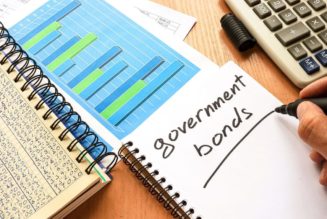Economy
Kenya on the move again as economy reverses 7-straight falls
Wednesday July 05 2023
Kariuki Gatiba arranges groceries at his stand at Nyeri town market on May 3, 2023. PHOTO | JOSEPH KANYI | NMG
Kenya’s economy has reversed seven straight back-to-back quarterly growth declines after pulling out of a prolonged electioneering period and a season of jobless growth defined by elevated inflation.
The latest official numbers show that the economy in the three months to March posted the fastest growth in the last four quarters, defying the high cost of living driven by a prolonged drought.
The quarter to March was the first time the economy has put brakes on seven straight declines from a high of 10.3 percent in 2021 to 3.7 percent in December, pointing to glimmers of recovery from post-pandemic global supply disruptions.
Read: Why government didn’t convert Sh537bn pending bills into bond
The Kenya National Bureau of Statistics (KNBS) reported on Tuesday that the country’s gross domestic product expanded by 5.3 percent in the first quarter of the year, a faster pace than 3.7 percent in the previous period ending December 2022.
The rate of growth was also higher than the quarter ended September (4.3 percent) and the second quarter of last year (5.2 percent) when the country battled twin shocks of a severe drought and global supply disruptions related to the Russian invasion of Ukraine.
The expansion in economic activity in the January-March 2023 period was, however, slower than 6.2 percent in the same quarter last year before the country started feeling the full impact of the Russia-Ukraine war on global supply chains.
KNBS attributed the performance primarily to “sufficient rainfall”, which lifted farming activities to a growth of 5.8 percent, the first since the last quarter of 2020.
“The growth was largely supported by a rebound in agricultural activities, which grew by 5.8 percent owing to sufficient rainfall experienced during the quarter under review,” KNBS wrote in the GDP report for the first quarter.
“The significantly improved performance of the sector was attributable to favourable weather conditions that led to enhanced production, especially that of food crops during the period under review. The performance was evident in the significant increase in the export of vegetables and fruits recorded during the quarter in review.”
Despite the overall growth in farming output relative to the same quarter last year, producers of tea, coffee, sugarcane and milk posted subdued production on the back of a biting drought from the previous quarters.
Milk deliveries to processors fell 15.7 percent to 166.5 million litres, tea by 13.0 percent to 118,100 metric tonnes, and coffee by 5.4 percent to 11,284.9 metric tonnes.
Sugar cane deliveries to millers, however, rose a marginal 0.4 percent to 2.17 million tonnes.
The Russia-Ukraine war impacted the supply of fertiliser globally, resulting in a price surge that hit farmers hardest last year, sending prices of food crops, including staple maize, through the roof amid a prolonged drought said to be the worst in four decades.
The resultant food inflation dragged expansion in economic activity in the review quarter, the KNBS data showed, by squeezing household budgets at a time real salaries have remained negative for the third consecutive year.
Inflation — a gauge of the cost of living over 12 months — averaged 9.13 percent in the January-March period compared with 5.34 percent in the corresponding period in 2022.
This was majorly driven by spikes in food and energy prices amid a weakening shilling, which shed 11.1 percent against the US dollar, the reserve currency in international trade.
The Central Bank of Kenya, tasked with the stabilisation of demand-driven prices, increased benchmark interest rates to 9.50 percent in the review period from 8.75 percent to manage expectations on a further rise in the cost of living measure.
Increasing the key lending rate makes borrowing more expensive as banks use the rate as a base on which they load their margins when pricing loans.
The growth in benchmark central bank rate, technically known as [monetary] policy tightening, is expected to prompt consumers to cut or postpone expenditure on luxurious goods, thus helping rein in elevated inflationary pressures from the demand side.
Elevated inflation amid the depreciating shilling hurt output in the manufacturing sector, which significantly relies on foreign markets for supplies.
Growth in the sector slowed to 2.0 percent from 3.8 percent in the first quarter of 2022, supported by the production of bakery products such as bread as well as the processing and preservation of fish.
Activities in the transportation and storage sector also slowed to 6.2 percent from 7.7 percent the year before, helped by railway services amid high fuel costs, which hurt fares for road transport.
Growth in construction, which is largely driven by public investment in infrastructural projects, decelerated by half to 3.1 percent compared with 6.0 percent previously on the back of reduced cement consumption.
Other sectors which posted slowed expansion include financial and insurance services to 5.8 percent from 17.0 percent on rising cost of borrowing and ICT to 8.7 percent from 9.0 percent.
Accommodation and food service —whose real value added to the economy is yet to rebound to pre-pandemic levels—grew 21.5 percent compared with 40 percent.
Read: Inside Ruto’s first Sh3.6 trillion budget
“The accommodation and food services activities sector has been growing steadily owing to the dissipation of the effects of the Covid-19 pandemic that consequently led to an improved economic environment in most tourist destinations,” KNBS said.
“The visitor arrivals through the two major airports (Jomo Kenyatta International Airport and Moi International Airport) rose by 50 percent from 225,321 in the first quarter of 2022 to 337,937 visitors in the quarter under review.”









